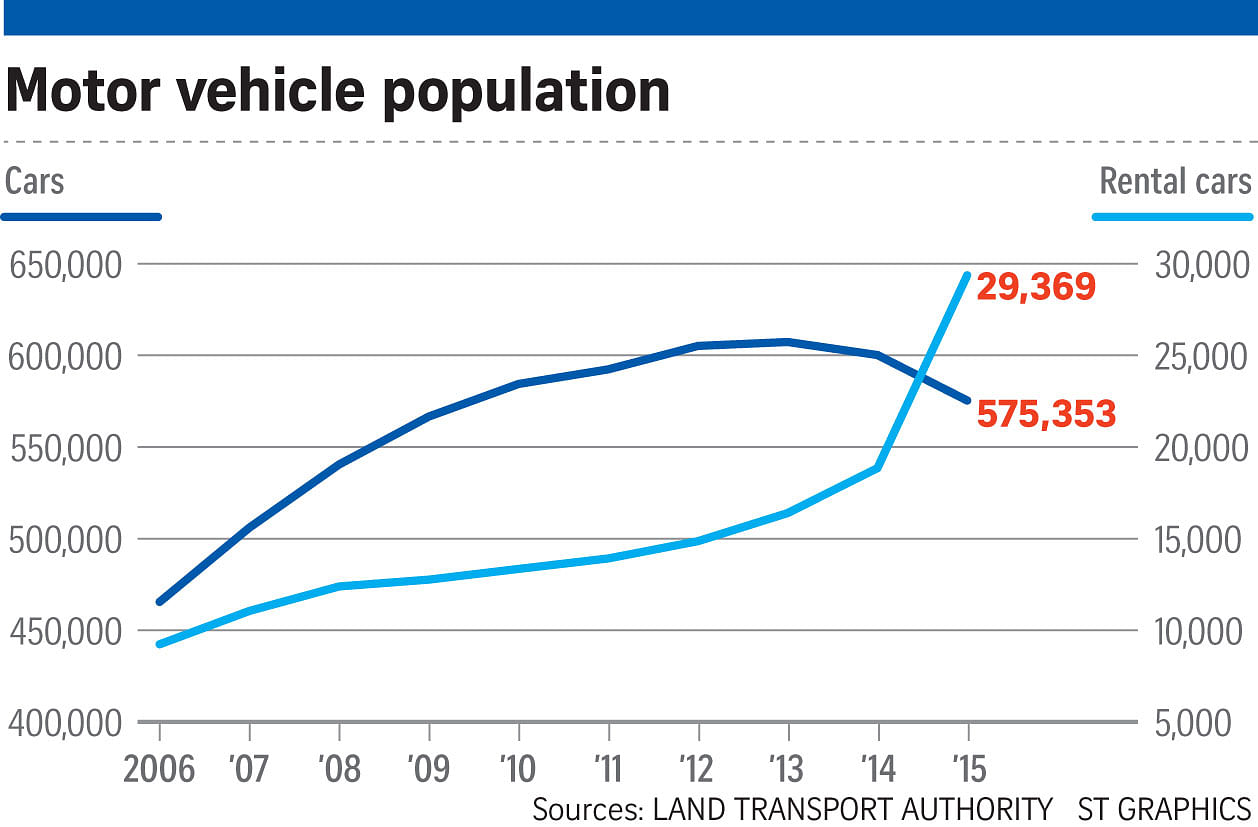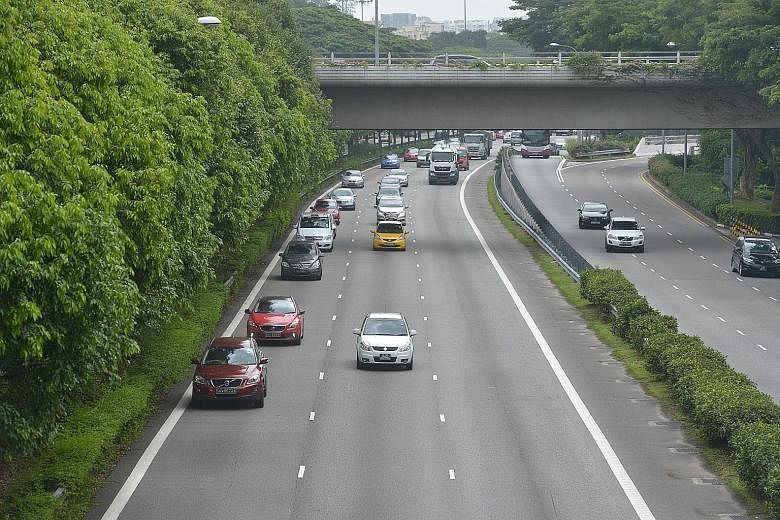Singapore's car population has shrunk to a five-year low, reversing an almost unbroken trend of growth in the past decade.
If the cohort of rental cars - which has ballooned on the back of demand from app-based taxi services such as Uber and GrabCar - is taken out, the car population would be the lowest in six years.
The latest statistics from the Land Transport Authority (LTA) showed that the passenger car population had fallen for two consecutive years to reach 575,353 last year - 4.1 per cent lower than in 2014, and the lowest it has been since 2009.
In contrast, rental cars grew by 55.8 per cent last year to reach a record number of 29,369.
The unusual growth pattern, which came on the back of a 5 per cent growth in the road network, took place despite a 0.25 per cent allowable growth rate in the vehicle quota system.

Motor traders said this was because of a time lag between vehicle deregistrations and certificate of entitlement (COE) allocation. For instance, the February-April 2016 COE quota is based on vehicles scrapped in October-December 2015.
"The current allowable growth rate of 0.25 per cent is not big enough to offset this lag," said Mr Ron Lim, general manager of Nissan agent Tan Chong Motor.
And as part of the COE quota is based on vehicle population, a shrinking population would have a negative impact on the number of COEs available, he added.
The LTA, however, said the shrinkage was "temporary" but would not say when it would end.
Observers said this could happen within the next two years, when the COE supply, fuelled by record deregistrations, is expected to explode.
Experts reckon the car population shrinkage is in line with the Government's "car-lite" push.
National University of Singapore transport researcher Lee Der-Horng said: "With the increasing connectivity of public transport, I think residents should make the move to be less reliant on cars."
Dr Walter Theseira, an economist at SIM University, said Singapore can dilute the demand for cars by improving public transport and promoting telecommuting.
He added that, with the next-generation Electronic Road Pricing system, car usage - the cause of congestion - can be regulated more effectively.
"If driving is expensive, even if ownership is not, people will choose to use other means of transport," he said.
Nanyang Business School adjunct associate professor Zafar Momin said any policy change should weigh the value of being equitable versus the value of providing efficiency for Singaporeans.
"Providing access to car ownership to those who need it the most should be at the heart of designing any policy mechanism to achieve a balance between the two."

